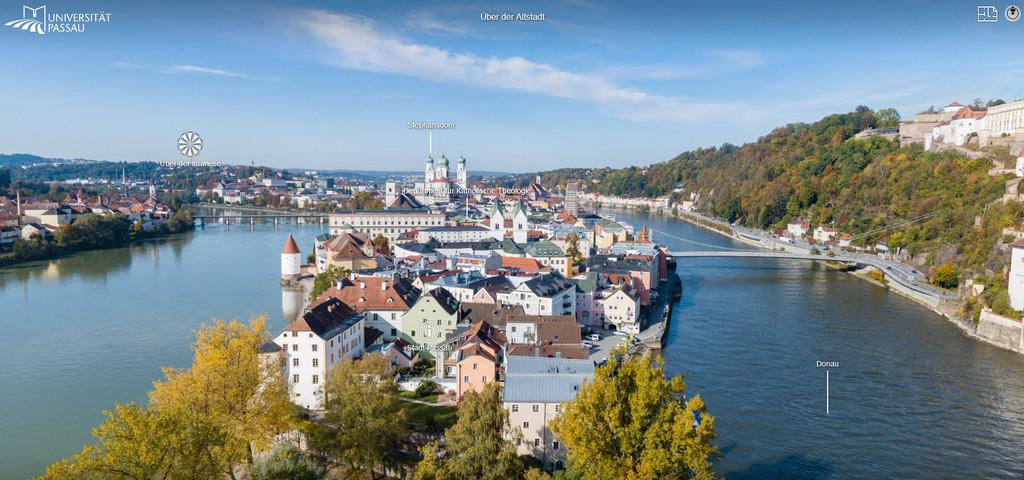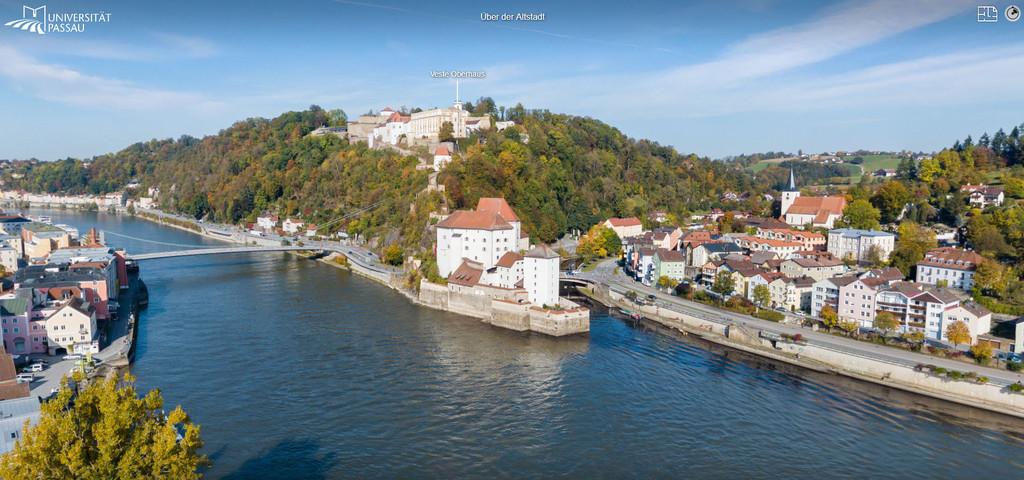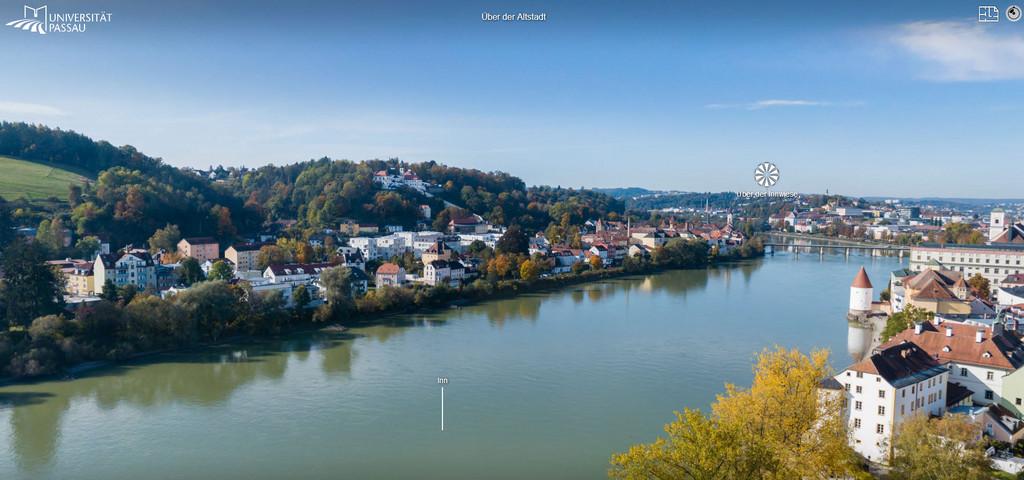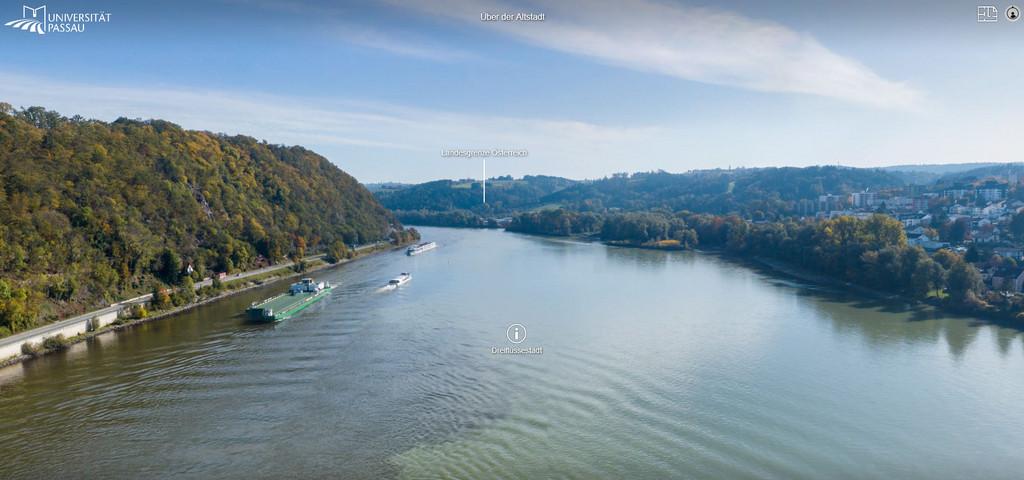This is the accessibility standards compliant alternative version of the virtual campus tour. If you are not affected by a disability, we recommend you visit the original tour instead. The 360-degree tour is more immersive and includes the full high resolution images. Visit the University of Passau 360-degree campus tour.

Inn and Danube meet each other at a narrow angle, giving Passau the appearance of having been built on a wedge-shaped peninsula. The almost romantic-looking skyline is punctuated by towers. Little towers, medium-sized towets, huge towers, belonging to churches, the cathedral, monasteries, and other historic buildings.

Over 100 meters above the river valley, the Veste Oberhaus castle, first constructed in 1219, is connected to the Unterhaus by a fortified wall descending the steep hill. Its position offered a safe retreat for the ruling bishops in old times. In the Middle Ages, it was besieged several times, including revolts by the local populace. Sadly, its dungeons have a dark history.
Today, the Oberhaus contains a museum, a youth hostel and an upmarket restaurant, among other things.
Below the hill, the river Ilz flows into the Danube, separating the Unterhaus from Ilzstadt. The Ilz is known as the "black pearl" of Bavaria. (However, no Pirates of the Caribbean have been spotted here to the best of our knowledge.) Its waters are dark, filled with wildlife, and it used to be an important river for pearl fishing and timber transport. Today, nature is strictly protected along much of its length.

On the Southern bank of the river Inn, Innstadt feels almost a little independent from Passau. With its own brewery, festivals and the pilgrimage church Wallfahrtskirche Mariahilf, Innstadt is certainly a significant borough of the city. The Mariahilf church, too, was the site of sieges and significant historic events, which led to it becoming a centre of pilgrimage.

The mixing of the waters of Inn, Ilz and Danube is striking to watch from above, as each river has its own colour.
The Danube is not as busy with river traffic as it used to be, but it is still used for freight transport and passenger cruises. In the summer season, people take cruise ships from Passau, some of which go as far as the Black Sea. If you haven't got several weeks to spare, or if you don't want to cruise all the way to the Ukraine and Romania, then regular day trips to Linz and weekend trips to Vienna can offer a taste of life on board a river cruise.
![[Translate to Englisch:] Passau Altstadt](/fileadmin/_processed_/0/c/csm_Stadt_Passau_ea1baeed60.jpg)
A quarter of the residents in Passau are students.
The beautiful Old Town buzzes with cafés and pubs, theatres and cinemas, international festivals and cultural events. There is something on offer for every taste!
Passau lies on the confluence of three rivers, close to the point where the borders between Germany, Austria and Czechia intersect.
The Danube has been a major traffic artery since ancient times. In industrial times, the railways followed its route across the continent.
Its location at the heart of Europe has shaped Passau into a city that is proudly cosmopolitan despite its small size.